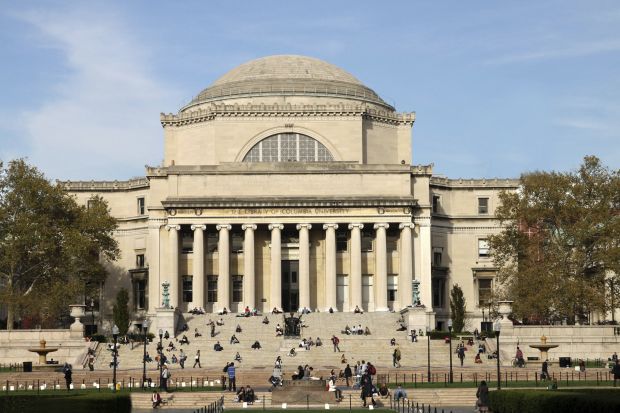US universities with the best physical campus environments tend to have stronger student retention and graduation rates, according to research.
A study looking at the qualities of US campuses found that physical campus characteristics can impact student satisfaction and academic performance.
The research from Amir Hajrasouliha, assistant professor in city and regional planning at California Polytechnic State University-San Luis Obispo, devised a “Campus Score” to measure the “urbanism, greenness and on-campus living” of 103 research-intensive universities in the US.
It examined 10 qualities, which included the proportion of pervious open space; density of tree canopies; proportion of surface parking areas; proportion of students living on campus; campus compactness; diversity of land uses; and the centrality of the campus to its county.
In each case, higher amounts meant higher scores, with the exception of surface parking areas.
The research found that universities with the highest campus scores tended to have a higher proportion of students who stayed at the university after their first year and a higher proportion of students who graduated within six years.
Professor Hajrasouliha said that the research shows that physical campus characteristics “matter more than universities realise”.
“The most common strategies to improve retention and graduation rates are financial- and academic-related strategies, such as revising the financial aid strategy, reregulating student selectivity policy, investing in academic and advisory services, and revising curriculums and programmes. But sometimes we forget that a valuable asset for student success can be the physical campus itself and its surroundings,” he said.
“A supportive learning environment in a physical sense can enrich students’ college experience, create a sense of belonging, and respond to their social and emotional needs.”
| Rank | University | Urban score | Green score | Living score | Campus score (composite score) |
| 1 | Columbia University | 248.84 | 93.52 | 216.79 | 238.25 |
| 2 | Princeton University | 100.17 | 187.36 | 223.12 | 226.66 |
| 3 | Lehigh University | 97.86 | 219.43 | 161.89 | 204.03 |
| 4 | Duke University | 63.93 | 193.08 | 191.45 | 193.20 |
| 5 | Emory University | 69.06 | 223.07 | 159.78 | 191.68 |
| 6 | Boston University | 200.79 | 89.84 | 176.67 | 188.92 |
| 7 | Stanford University | 106.34 | 126.42 | 210.45 | 187.96 |
| 8 | Yale University | 153.21 | 86.96 | 202.01 | 182.08 |
| 9 | William & Mary |
36.62 | 217.00 | 172.45 | 181.83 |
| 10 | Clarkson University | 15.08 | 209.99 | 193.56 | 181.79 |
New York’s Columbia University comes top in terms of its overall campus environment, followed by Princeton University and Lehigh University.
Columbia is the top scorer when it comes to urbanism, while Emory University, which comes fifth overall, is the greenest campus analysed, and Princeton achieves the highest living score.
Private universities, on average, have significantly higher scores in the ranking than public institutions, while universities with greater levels of research activity tended to feature higher up the list.
Campuses built before the American Civil War also did better than newer campuses, mainly because of differences in on-campus living.
In terms of recommendations for universities based on the research, Professor Hajrasouliha suggested that institutions could increase on-campus housing for students and decrease surface parking areas.
For institutions in urban settings, he recommended investing in green spaces on and adjacent to campuses, while he said that encouraging infill and mixed-use development on or adjacent to campuses could lead to improvements for suburban and rural institutions.




